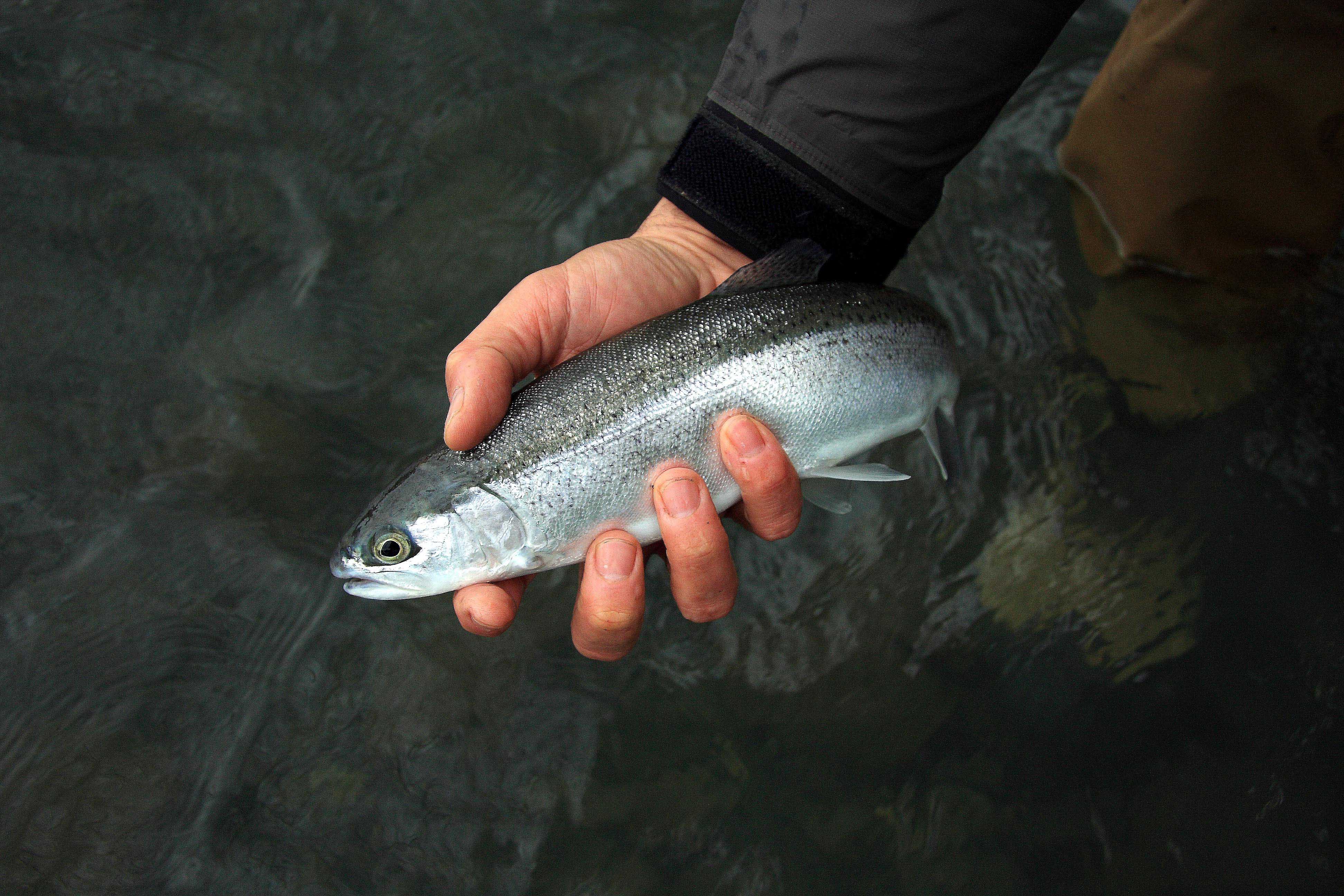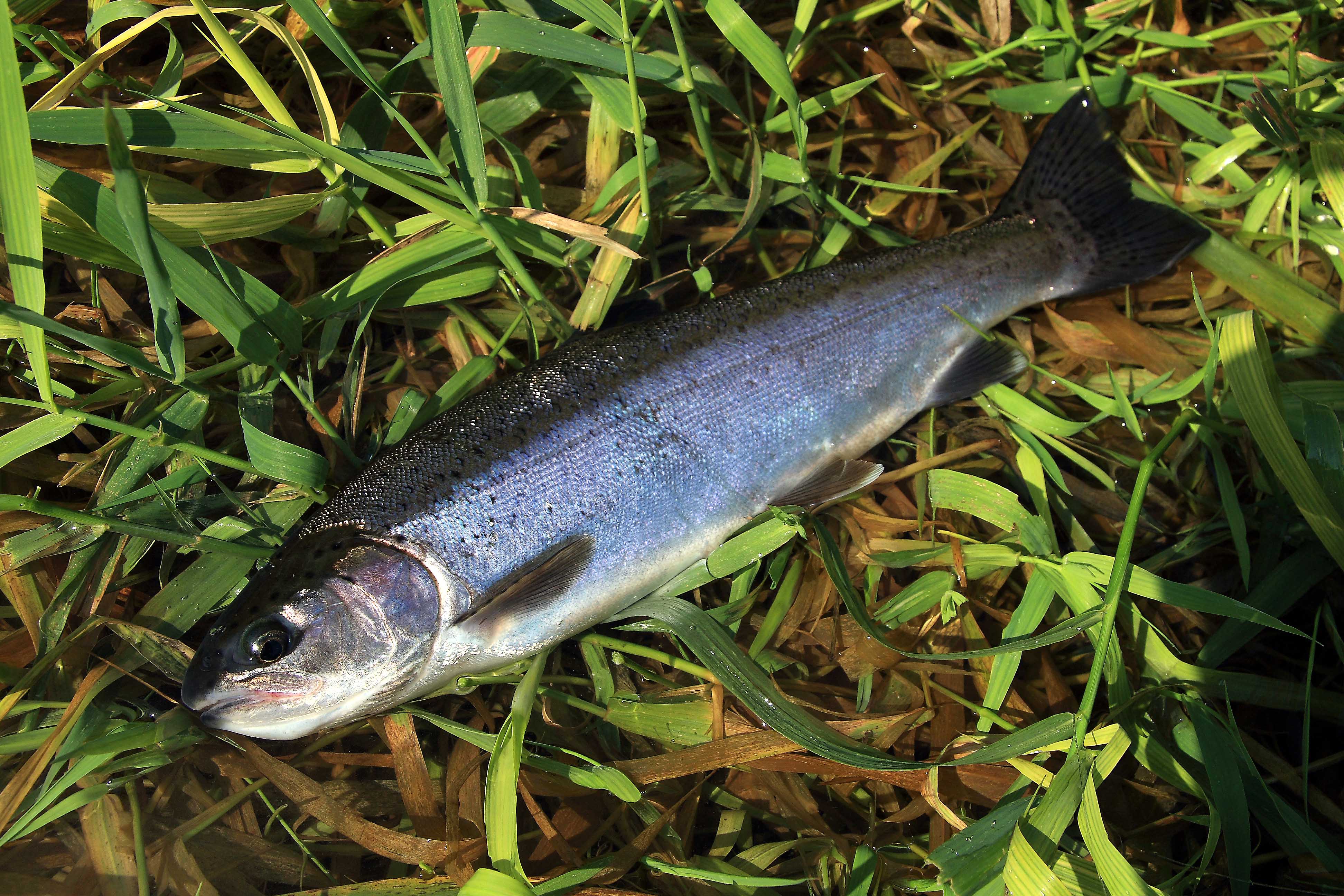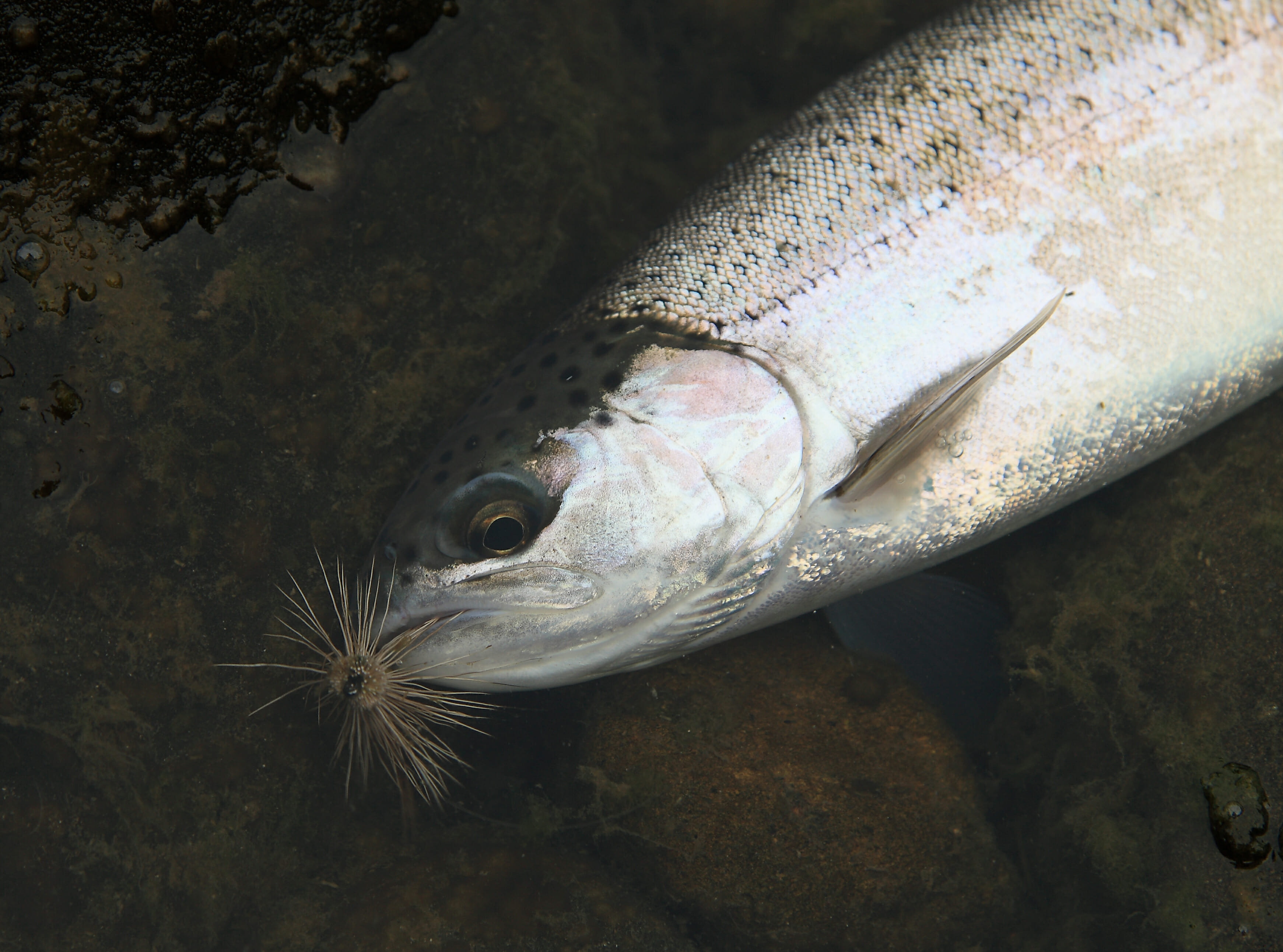Editors note: Every Friday, our science junkies over at Trout Unlimited’s Wild Steelhead Initiative give us an inside look at what’s happening in the world of steelhead science. During the Holidays, we’re running the best of those Science Friday piec
es on the TU blog. If you’ve ever spent any time thinking about the sheer game of chance involved in the life-cycle of a wild steelhead, you know this is a world filled with drama, wonder, and downright crazy stuff. And at TU no one knows it better than our science experts. Here are a few of our favorite posts from 2017.
Want more? Follow along at wildsteelheaders.org.
By John McMillan
Originially published October 2017
When anglers dream of steelhead, they mostly fantasize about fish that have spent 2-4 years in the ocean and return to freshwater to spawn as full adults, packing four or more pounds and brutish power into their physique. However, one of the most common forms of returning steelhead in some rivers is not the adult, but the so-called half-pounder.
Half-pounders are an important component of sport fisheries in several rivers draining northern California and southern Oregon. This is because in these river systems half-pounders are remarkably abundant compared to their full-sized counterparts, and they bite nearly anything that hits the water. Their abundance and aggressive nature are why so many anglers love to fish for them.
 src=”http://www.tu.org/wp-content/uploads/2018/12/Elwha-hatchery-half-pounder0001-smallxx.jpg” />
src=”http://www.tu.org/wp-content/uploads/2018/12/Elwha-hatchery-half-pounder0001-smallxx.jpg” />- Northern California half pounder caught in freshwater
The term “half-pounder” is really a misnomer; fish of this life history are typically 12-18 inches in length and can weigh as much as 2 pounds. Theirs is an interesting steelhead life history in which individuals spend 3-5 months in the ocean, then return to freshwater at a relatively small size and in an immature state. They over-winter in the river, then head back to the sea and spend an additional 1-2 years in the ocean to reach full adult size and maturity.
Despite the importance of the half-pounder to populations of steelhead and to anglers, until recently little research has been published on this life history. That is changing, however — new research is being driven in particular by apparent declines of half-pounders in some populations. So today we review a recent paper by Matthew Peterson and two co-authors that evaluates potential causes of decline of half-pounders in California’s legendary Trinity River: “Decline in the half-pounder life history among Trinity River, California, steelhead.”
(Here is a link to a previous Science Friday on half-pounders ).
A central finding in the Peterson study is that while the expression of half-pounders appears to remain high for steelhead in the mainstem Klamath and Rogue Rivers, half-pounders have declined substantially since 1982 in both hatchery and wild steelhead in the Trinity River, a tributary to the lower Klamath. The authors found that 71% of Trinity River adults in 1982 were previously half-pounders compared to only 10% from 1994-2013. That is a pretty large decline. In contrast, the expression rate was about 90% in the Klamath in 1982 and remains about 90% today. Similar data suggests the expression rate has remained relatively stable in the Rogue, as well, which raises the question: What factors may be influencing the pattern?
The best answer appears related to size and age at smolting, which influences whether a fish becomes a half-pounder or not. For instance, half-pounder expression rates were much higher for one-year old smolts than two-year old smolts, and among the one-year old hatchery fish smaller sized smolts had a greater tendency to become half-pounders. Changes in smolt size and age might help explain the declines in the Trinity compared to the Klamath and Rogue.
The study’s authors did not have enough information to clearly identify the causes of decline of half-pounders in the Trinity, but they did offer some plausible potential explanations. First, the doubling of weight of hatchery smolts at release appears to have contributed to reduced expression of the half-pounder life history. For example, there were two years in which hatchery smolts were released at an unusually small size, which in turn resulted in a large increase in half-pounder expression relative to years when smolts were released at their typically larger size. This suggests there is a strong environmental influence because they also saw an increase in wild half-pounders those same years, meaning environmental conditions that favor greater growth in one-year old smolts could reduce half-pounder expression.
Second, over the period of decline there have been substantial changes in how streamflow is regulated in the Trinity River, in part to help imperiled salmon stuck in the lower Klamath where they are subject to dangerously high water temperatures and spread of disease. These changes in flow timing and intensity have been more dramatic in the Trinity than in the Klamath. Changes in flows may influence water temperature, which in turn affect growth and size of smolts. One theory is that colder flows may reduce growth and induce a longer rearing period for juveniles. This could change the size and proportion of one- and two-year old smolts, which could impact half-pounder expression.
However, the changes in flow in the Trinity cannot explain the change in half-pounder expression among hatchery smolts because they are not subjected to those conditions. Thus, the authors postulate the most logical cause for the half-pounder decline is a “hatchery effect.”
This theory posits that half-pounder life histories are partly controlled by genetics and the hatchery has been producing fish that are genetically less predisposed to return as half-pounders, presumably because of the large smolts that come from the hatchery program. This in turn could impact the return of wild half-pounders because a large proportion of the natural spawning steelhead are of hatchery-origin, meaning that interbreeding between hatchery and wild fish could also have reduced the expression of half-pounders in the wild population.
 src=”http://www.tu.org/wp-content/uploads/2018/12/Rogue-halfpound-11-small.jpg” />
src=”http://www.tu.org/wp-content/uploads/2018/12/Rogue-halfpound-11-small.jpg” />- Hatchery origin half pounder
The study highlights the need for additional well-designed research that can more clearly determine the causes of decline in Trinity River half-pounder steelhead. If it is primarily due to a hatchery effect, it may be possible to ameliorate that influence by changing breeding and rearing practices to ensure that half-pounders remain a key part of the run. If this factor is not the primary cause for the decline, then we could see continued degradation in the diversity of Trinity River steelhead. This is problematic because, as we have discussed often in this forum, life history diversity is critical to the resilience and viability of wild steelhead populations. This is precisely the reason why Wild Steelheaders United and TU remain very focused on restoring diversity in steelhead populations across the West.
 Trout Unlimited’s Wild Steelhead Initiative and associated advocacy group, Wild Steelheaders United is an ambitious and hopeful effort to protect and restore wild steelhead. Today, 70 percent of the major steelhead populations in Oregon, Idaho, Washington and California require federal protection and opportunities to catch wild steelhead have diminished dramatically in many rivers. For more information, go to wildsteelheaders.org or join us on Facebook and Instagram.
Trout Unlimited’s Wild Steelhead Initiative and associated advocacy group, Wild Steelheaders United is an ambitious and hopeful effort to protect and restore wild steelhead. Today, 70 percent of the major steelhead populations in Oregon, Idaho, Washington and California require federal protection and opportunities to catch wild steelhead have diminished dramatically in many rivers. For more information, go to wildsteelheaders.org or join us on Facebook and Instagram.



